FEBRUARY 2019 ENEWS
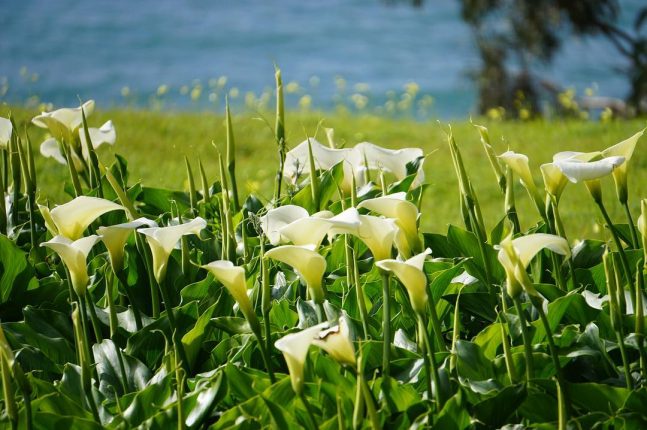
Dear friends of Fort Ross and Salt Point,
We are sticking with the long form story in our enews, so please do scroll down to survey this month’s offerings. Our staff love our parks and they want to inspire you to feel the same!
It’s nearly March -- is there an emoji for utter disbelief? -- and our 2019 event calendar is ramping up. Alaska Native Day on May 18th is a gorgeous and deeply important acknowledgement of the Alaska Native presence at Fort Ross during the Russian era. This year we welcome performances from the Anchorage Unangax Dancers from the Aleutian Islands of Alaska; Ekatherina Savvinova (Saina) of Sakha Republic will be performing her songs and sharing the Siberian Native history at the Fort; and Haida Artist Rachel Langford will be leading a metal etching project. And of course Alaska Native Day includes the very exciting 6th Annual John Sperry Memorial Qayaq Race at Sandy Cove. If you are interested in participating or have questions, please contact Lauren Peters at sjsulauren@gmail.com.
And the perennial favorite Fort Ross Festival is scheduled for July 27th, 2019. While the event name has changed with the decades, this family-friendly celebration has been going strong since the 1970s and it’s a tradition for many!
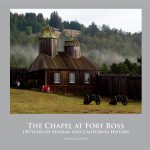
FRC juggles all sorts of projects, everything from event planning to educational programming. In years past our team has written or coordinated many educational publications, and these interpretive projects have always been one of my favorite tasks. Unfortunately as we’ve taken on more park management, we are finding it difficult to carve out the quiet time needed to get new interpretive content released. For all these reasons we’re immensely pleased to have one important publication printer-ready: The Chapel at Fort Ross: 150 Years of Russian and California History by Maria Sakovich. Our lovely chapel is the earliest Russian Orthodox chapel built in the contiguous United States and for many, visiting the chapel is akin to a pilgrimage. Author Sakovich’s 45-page essay describes the design, construction, and use of the chapel during the Russian era and documents its many incarnations during the subsequent Ranch and State Parks eras, all abundantly illustrated with interesting historic photos and drawings. This will be a new offering at the Fort Ross bookshop.
We are grateful to be a part of this wider community. We appreciate your membership, the kind notes you send us online and in person, and all the ways you show your support for our public lands. Let’s keep in touch.
We’ll see you at the fort!
Warm regards,
Sarah
sarahs@fortross.org
Viola Adunca Treasure Hunt Returns!
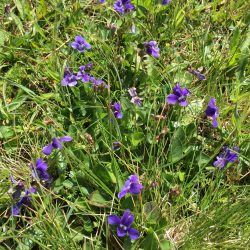
FIRST TRAINING: Friday, March 8th, 2018 - 11:00 AM
Fort Ross State Historic Park Visitor Center Auditorium
Join us for for the return of our botanical treasure hunt! We are looking for volunteers to explore the beautiful coastal bluffs of Fort Ross and Salt Point State Parks in search of the tiny flower known as the Western Dog Violet (Viola adunca) and to upload your findings using the “Calflora” app on your smartphone.
The flower is the host plant for the endangered Silverspot butterflies found along our coast. Butterflies are an important part of our ecosystem and, similar to the declining California monarch populations we’ve all been reading about, the Silverspot butterflies have been listed as endangered since 1997. Because of the data we’ve collected in previous surveys, California State Parks (CSP) and Fort Ross Conservancy were awarded a Coastal Prairie Restoration Grant of $100,000 to restore our grasslands and save our butterfly friends! We owe our dedicated volunteers for being a huge part of that success!
This year’s surveys will further Fort Ross Conservancy and State Park’s conservation efforts to improve our coastal prairie habitat.
By participating in this flower survey you will have the opportunity to sign up for the butterfly surveys this summer and be out in the fields working with our State Parks environmental scientists.
All volunteer hours will contribute to the State Parks Volunteer In Parks program which awards volunteers with park passes depending on the number of hours served. Volunteers who complete 24 hours of service in a calendar year will receive a district-wide parks pass for the following year. A state-wide pass will be rewarded for 200 hours of service. Interested? Send me an email at melissab@fortross.org to participate!
Marine Mammal Monitoring at Fort Ross
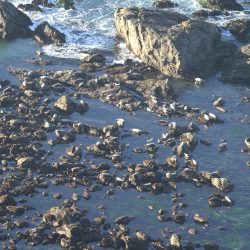
Harbor Seal Surveys - Annual Training
Saturday, March 9, 2019 9:30 am -12:30 pm
Fort Ross State Historic Park Visitor Center Auditorium
Come join us for an onsite field training that will introduce you to our Harbor Seal surveys. Surveys take about two hours and are conducted by walking two miles of beautiful low-tide shoreline and monitoring our pinniped friends. There are twelve Saturday surveys scheduled from March through July of 2019 (surveys can be completed any day, Thursday through Monday, around the Saturday target dates). Survey data is sent to the National Park Service’s SF Bay Area Network Inventory & Monitoring Program. By contributing to the long-term monitoring of harbor seals, this data will aid in protecting seal colonies and assessing the health of the marine ecosystem! Free training offered by Fort Ross Conservancy. Please contact Melissa Bushner to confirm attendance (or arrange for alternative training time) at melissab@fortross.org or call (707) 847-3437.
All volunteer hours will contribute to the State Parks Volunteer In Parks program which awards volunteers with park passes depending on the number of hours served.
Field Trip Opportunities on the California Coast
Extra! Extra! Read all about it! FRC is thrilled to be providing so many opportunities for fun outdoor education for all ages at Fort Ross. Help us spread the word or sign up today!
“Thank you so much for a great experience. This was the highlight of our year. We did multiple trips this year and this was the best.” - Santa Rosa High School Teacher
Fee Waivers Available! - Public lands and outdoor learning experiences should be available to all, irrespective of the cost. Thanks to the generous support from our donors we have created the Fort Ross Education Fund to offer program fee waivers and/or transportation subsidies to schools that would otherwise be unable to participate and we welcome teachers of all schools to apply!
Marine Ecology Program - Our Marine Ecology Program provides an exciting outdoor educational field trip for students, including:
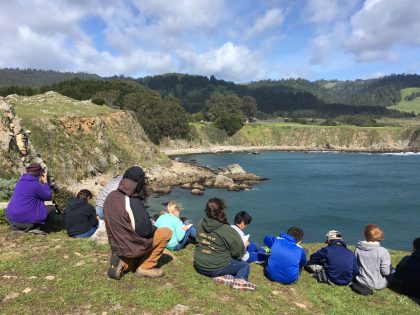
- Learning how to engage in hands-on marine mammal observation, identification, and survey,
- Exploring the diverse and fragile intertidal zone and its beautiful life forms,
- Keeping a field journal to record scientific data, thoughts, and sketches,
- Studying current and historic ecological interconnections,
- Discussing the importance of biodiversity and marine conservation,
- Team building and collaborative learning in an outdoor classroom setting.
Environmental Living Program - The Environmental Living Program provides hands-on learning which allows students to experience the joys of history as active participants, exploring the interaction between people and their environment. Immersed for a brief time in the past, students learn about the many cultures and lifestyles present at Settlement Ross. Through performing some of the tasks that were a part of daily life at Fort Ross, such as cooking, fishing, processing natural materials that have been gathered according to season, practicing artisanal crafts, dancing, students gain a better understanding of history and their relationship to it. During an overnight Fort Ross ELP, students, parents, and teachers sleep inside the historic compound buildings.
Educational Opportunities - For those groups that can’t commit to a full MEP or ELP, we offer one to four-hour Educational Opportunities which delve into the natural marine ecology or cultural history of Fort Ross. Pair this professionally-led tour with other guided site visits to the orchard, cemetery, Sandy Cove beach, tidepools, plus a picnic lunch, and you have a day of wonderful activities for your school group!
Marine Mammal Monitoring - Assist us with our citizen scientist efforts as we monitor the harbor seals and California and Steller sea lions that haul out along our coast. Taking part in a survey is a great way to increase your understanding of the natural world and helps you to more accurately identify the animals that live on our shores. It’s also great fun!
For more information on all our programs and available financial aid, email Director of Programs, Song Hunter.
A Bobcat Bounding Along the Blufftop
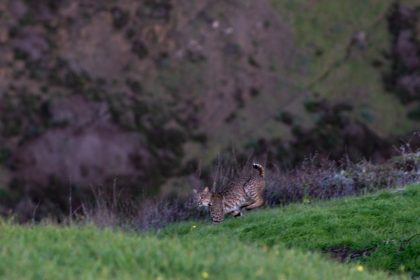
During our monthly Beach Watch blufftop survey of Fort Ross Cove this February, nature granted Song Hunter and me a treat sweeter than any box of Valentine’s Day chocolates: a beautiful bobcat (Lynx rufus) sighting. While we were making our way to the edge of the blufftop from the forested bend along the Cove, the agile animal dashed in front of us and disappeared in the brush faster than we could say “Bob’s your uncle.” The encounter was so short-lived that we couldn’t get the camera out fast enough. But as luck would have it, local photographer Paul Miller took a couple of great photographs of a bobcat at the same Fort Ross location just a few days earlier which we are sharing here. Since bobcats are typically solitary creatures that hold large territories, chances are good that the animal you see in these photos is the same one that Song and I saw.
If you’re interested in trying to spot a bobcat yourself, it’s helpful to know that these small, stealthy wildcats prefer to hunt around sunrise and sunset making these typically the best times of day to catch a glimpse of them. Bobcats weigh from 11 to 30 pounds and are about twice the size of an average housecat. They can be identified by the characteristic “bobbed” tail that they are named for -- the tail ends in a black and white tip and is about 6 or 7 inches long. For comparison, a cougar tail is closer to 3 feet long -- quite a difference. Bobcats can also be identified by their beautiful tawny to reddish brown spotted and streaked fur coats. It’s these beautiful fur coats that make bobcats popular among fur-trappers. According to a 2016 National Geographic article by Rachel Bale, bobcat furs sourced in America are not commonly found in American stores but they are in demand overseas in Russia, China and Europe -- where a bobcat fur coat can retail at $150,000!
When we think of beautiful, expensive Fort Ross fur coats, we tend to recall the sad tale of the overhunted sea otter. Due to the incredibly high commercial value of sea otter pelts, these animals were hunted to near extinction by Russian, American and British hunters in the 19th century. We now know the loss of this one precious animal has led to a severe imbalance in our local marine environment and has had a negative impact on the numerous marine flora and fauna that depend on a healthy kelp forest ecosystem. I’d also argue that the absence of otters in places like Fort Ross have impact on us humans that is quite to difficult to measure; we don’t have the chance to observe, experience, and learn directly from the otters that are now missing from our local environment. But at least for now, it doesn’t seem like this same fate will befall the bobcat.
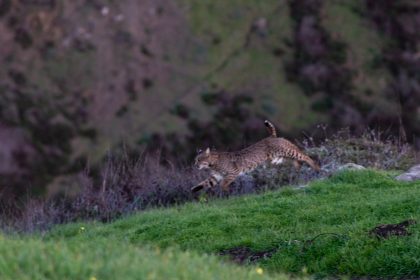
Bobcats have an impressive range from Southern Canada to Central Mexico and across the United States. They are the most abundant wildcat in North America today; it is thought that there are at least a million bobcats just in the United States. The success of this species probably has to do with their highly adaptable nature. Though they prefer to live and hunt in rocky hillsides with dense brush, they are adapted to live in almost any habitat type where there they can find food and water. And while some animals rely on a small, limited number of prey species to survive, carnivorous bobcats are opportunistic and can feed on a wide variety of small land mammals, such as mice, gophers, rabbits and ground squirrels; small land birds and reptiles. While the strong gopher presence at Fort Ross might have created some serious headaches for the Russian American Company employees charged with growing crops here in the 1800s, for the bobcats, the abundance of gophers and other small animals means a steady supply of food is there for the pouncing. And if bobcats are faced with a shortage of small prey, they can take down an animal much larger than themselves, such as a deer. Additionally working in their favor, bobcats have very few predators. While bobcat kittens are vulnerable and can be killed by a wider range of predators than the adults, including foxes, coyotes, eagles and great horned owls, adult bobcats can’t be taken down by much more than humans and cougars. It’s not surprising that bobcat populations are doing so well and this species is considered of “least concern” according to the International Union for Conservation of Nature (IUCN).
Beginning in March, Fort Ross State Park is going to be open 7 days a week once more! This means lots of opportunities to experience this beautiful and biodiverse, California coastal park. Come on down and maybe you’ll catch a glimpse of a bobcat bounding along the blufftop.
More on bobcats for kids
A bobcat species profile from National Geographic
Bobcat fur trapping article by National Geographic
IUCN: Bobcat
--Charon Vilnai, Programs Instructor and Sea Lion Survey Project Lead
Fort Ross Photo Contest
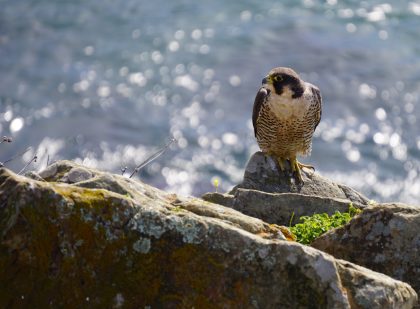 Calling all amateur photographers!
Calling all amateur photographers!
Fort Ross Conservancy is holding a photo contest leading up to our July 27th, 2019 Fort Ross Festival.
We will award three winners. Each winner will receive free entrance to Fort Ross Festival and — if the winner is over 21 — two free beers from our Beer Garden! We will print and display the three winning photographs during Fort Ross Festival for all to enjoy and appreciate.
Contest Rules:
- You must submit your photo between February 18 – July 1, 2019.
- You must have personally taken each photograph.
- You can submit between one and three photos. Minimum 300 dpi.
- The photo must be taken at either Fort Ross State Historic Park or Salt Point State Park.
- FRC will use the winning photos on our website, on FRC flyers and for other non-commercial purposes, with full credit to the photographer.
- Each photo should include location, caption, name and email of photographer.
Please submit your photos to info@fortross.org with the email subject line of ‘Photo Contest’. Questions? Email songh@fortross.org.
Harbor Seals - Know Our Neighbors
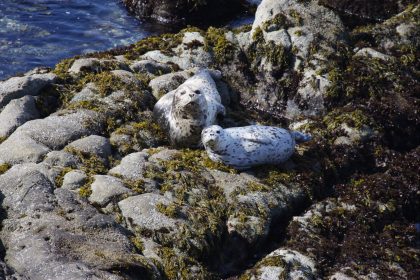 Pacific Harbor Seals (Phoca vitulina richardii) are the most common, numerous and year-round marine mammal pinniped (“fin-footed”) residents on our shores. Especially at low tide, harbor seals can often be seen hauled out on our nearby shoreline rocks of Fort Ross at Reef, Fort Ross Cove, Clam Beach, etc., and at Salt Point near Gerstle Cove. The spotted gray, silver, black and brown harbor seals haul out to regulate their body temperature, molt, interact with other seals, give birth, and raise their pups.
Pacific Harbor Seals (Phoca vitulina richardii) are the most common, numerous and year-round marine mammal pinniped (“fin-footed”) residents on our shores. Especially at low tide, harbor seals can often be seen hauled out on our nearby shoreline rocks of Fort Ross at Reef, Fort Ross Cove, Clam Beach, etc., and at Salt Point near Gerstle Cove. The spotted gray, silver, black and brown harbor seals haul out to regulate their body temperature, molt, interact with other seals, give birth, and raise their pups.
Around for about 20 million years and evolved to live on both land and sea, Harbor seals are the most widespread of all the earth’s marine mammals, and on our Pacific shores they can be found from Baja north through Alaska and onward south to Japan. Non-migratory, harbor seals typically stay within 15 to 30 miles of home. The estimated world-wide population of harbor seals is 500,000 individuals, with approximately 34,000 harbor seals in California and the state’s largest population, about 7000, nearby within Point Reyes National Seashore.
Harbor seals are members of the true seal family without external ear flaps, with short fore-flippers, and weighing up to 285 pounds and up to 6 feet in length. Opportunistic mostly nighttime hunters, harbor seals dive both deep and shallow to catch a diet of mainly of fish, shellfish and crustaceans. Harbor seals can sleep underwater and can stay under water for approximately 30 minutes. Harbor seals’ main predators are orcas, sharks and polar bears. Like all marine mammals, harbor seals are protected under the Marine Mammal Protection Act (MMPA).
Monitoring Our Harbor Seals
Since 1990, the San Francisco Bay Area Network's Pinniped Monitoring Program has been monitoring harbor seals in Point Reyes National Seashore and the Golden Gate National Recreation Area. Through the years the monitoring area has expanded from San Mateo to Sea Ranch. Fort Ross Conservancy staff and volunteers have been assisting these efforts since 2012. The full March through July monitoring season covers the March-May breeding season, the late April-early May pupping season, and onward through the June-July molting seasons. During peak pupping season, volunteers monitor at specific dates once a week, whereas earlier and later in the season as seldom as twice a month. Our survey stretches from Fort Ross Cove north for about a mile and a half, plus one popular haul-out spot below Meyers Grade.
The objectives of monitoring each site and the population as a whole are to:
- detect changes in population size,
- detect changes in reproductive success as indicated by pup production, and
- identify anthropogenic or environmental factors that may affect the condition of the population.
Give Them Some Space
From the shore, we can often see the round shiny dark head of a harbor seal poke up out of the water and curiously observe us. But harbor seals are very wary of people, especially while they’re on land, and they will rush into the water if approached too close or disturbed. If bothered too often seals have been know to abandon their favorite haul-out spots and also their pups. Though our harbor seal population appears to be stable, their abundance and distribution can be affected by disease, changes in food supply, environmental changes such as rising sea levels and disturbance to haul-out sites by commercial and recreational use.
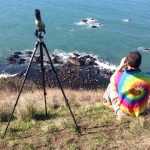
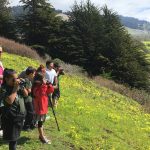
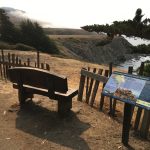
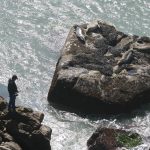
Harbor Seals at Fort Ross are most commonly seen during low tide times at the rocky Fort Ross Cove, especially at the roadside bench and bluffside viewpoint across from the Call Picnic Area. But don’t get too close to the edge nor scare away our neighbors!
What Can We Do?
Avoid disturbances!
- While on the shore, stay back at least 50 yards as instructed by the Marine Mammal Protection Act.
- Stay away from bluff top edges above hauled out seals below (or stand back - only your head needs to be above the horizon, not your whole body).
- Do not take your dog to the beach or along any unpaved trail beyond the fort and Visitor Center.
Serve as a FRC volunteer harbor seal surveyor
Contact Volunteer Coordinator Melissa Bushner, melissab@fortross.org
Contact Director of Programs Song Hunter, songh@fortross.org
Report a Stranded, Sick or Injured Marine Mammal
Contact The Marine Mammal Center’s 24-hour hotline at 415-289-SEAL (7325).
Report a Dead Marine Mammal
Contact the California Academy of Sciences department of Ornithology and Mammalogy at (415) 379-5381 or marinemammals@calacademy.org.
Gratitude
Many thanks to the the numerous energetic, dedicated, and invaluable volunteers that have assisted FRC’s Harbor Seal Marine Mammal Monitoring Program through the years! Special thanks go to survey coordinator Sarah Codde (Point Reyes National Seashore’s Inventory & Monitoring Program), Jamie Hall (Greater Farallones Association), and Dr. Joe Mortenson (co-author of the Field Guide to Marine Mammals of the Pacific Coast) who helped launch our program. FRC also received invaluable early support from the Madrone Audubon Society.
More Information
Marine Mammals at Fort Ross FRC webpage
San Francisco Bay Area National Parks harbor seal page: https://www.nps.gov/rlc/pacificcoast/harbor-seals.htm
San Francisco Bay Area Network Pinniped Monitoring Protocol
SFAN_2016HarborSealAnnualReport_20180920
NOAA's harbor seal page:
https://www.fisheries.noaa.gov/species/harbor-seal
Pacific Harbor Seal The Marine Mammal Center
--Hank Birnbaum, Bilingual Guide, Historical Specialist & ELP Instructor